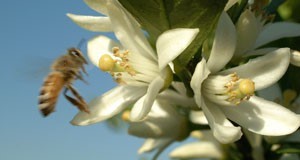Abstract
Pollinator insects are essential to world food crop production, the economy, and the environment. Neonicotinoid (neonic) insecticides are facing intense backlash from environmental groups because the systemic protection they provide throughout the plant, including the pollen and nectar, may be injuring pollinator insects and causing their population decline. But many nursery and greenhouse growers use neonic-based pesticide control measures because they are effective, inexpensive, and cause less environmental damage than other insecticides. The increased publicity may influence consumer demand and preferences but very few studies have investigated consumer responses to neonic-free labels, and evidence suggests that many consumers have little knowledge or awareness of the issue. This 3-page fact sheet describes the results of a study investigating how consumers’ awareness of neonic insecticides influenced their preferences and purchasing behavior for plants and explores the marketing potential of using alternate pollinator promotions (besides neonic-free) in garden center retail outlets. Written by Hayk Khachatryan and Alicia Rihn, and published by the Food and Resource Economics Department, March 2016.
References
Bonroy, O. and C. Consantoatos. 2014. On the economics of labels: How their introduction affects the functioning of markets and the welfare of all participants. American Journal of Agricultural Economics 97:239-259. https://doi.org/10.1093/ajae/aau088
Fairbrother, A., J. Purdy, T. Anderson, and R. Fell. 2014. Risk of neonicotinoid insecticides to honeybees. Environmental Toxicology and Chemistry 33:719-731. https://doi.org/10.1002/etc.2527
Gallai, N., J.M. Salles, J. Settele, and B.E. Vaissiere. 2009. Economic valuation of the volunerability of world agriculture confronted with pollinator decline. Ecological Economics 68(3):810-821. https://doi.org/10.1016/j.ecolecon.2008.06.014
Goulson, D. 2013. An overview of the environmental risks posed by neonicotinoid insecticides. Journal of Applied Ecology 59:977-987. https://doi.org/10.1111/1365-2664.12111
Klein, A.M., B.E. Vaissière, J.H. Cane, I. Steffan-Dewenter, S.A. Cunningham, C. Kremen, and T. Tscharntke. 2007. Importance of pollinators in changing landscapes for world crops. http://rspb.royalsocietypublishing.org/content/274/1608/303 https://doi.org/10.1098/rspb.2006.3721
Pilling, E., P. Campbell, M. Coulson, N. Ruddle, and I. Tornier. 2013. A four-year field program investigating long-term effects of repeated exposure of honey bee colonies to flowering crops treated with thiamethoxam. PLoS ONE 8:377193. https://doi.org/10.1371/journal.pone.0077193
Rihn, A., and H. Khachatryan. 2016. Does consumer awareness of neonicotinoid pesticides influence their preferences for plants? HortScience, 51(4): 388-393. https://doi.org/10.21273/HORTSCI.51.4.388
US EPA. 2013. Colony Collapse Disorder: European Bans on Neonicotinoid Pesticides. Washington, DC: Environmental Protection Agency.
Wollaeger, H.M., K.L Getter, and B.K. Behe. 2015. Consumer preferences for traditional, neonicotinoid-free, bee-friendly, or biological control pest management practices on floriculture crops. HortScience 50:721-732. https://doi.org/10.21273/HORTSCI.50.5.721
Zalom, F.G., N. Toscano, and F.J. Byrne. 2005. Managing resistance is critical to future use of pyrethroids and neonicotinoids. California Agriculture 59(1):11-15. doi:10.3733/ca.v059n01p11. https://doi.org/10.3733/ca.v059n01p11

